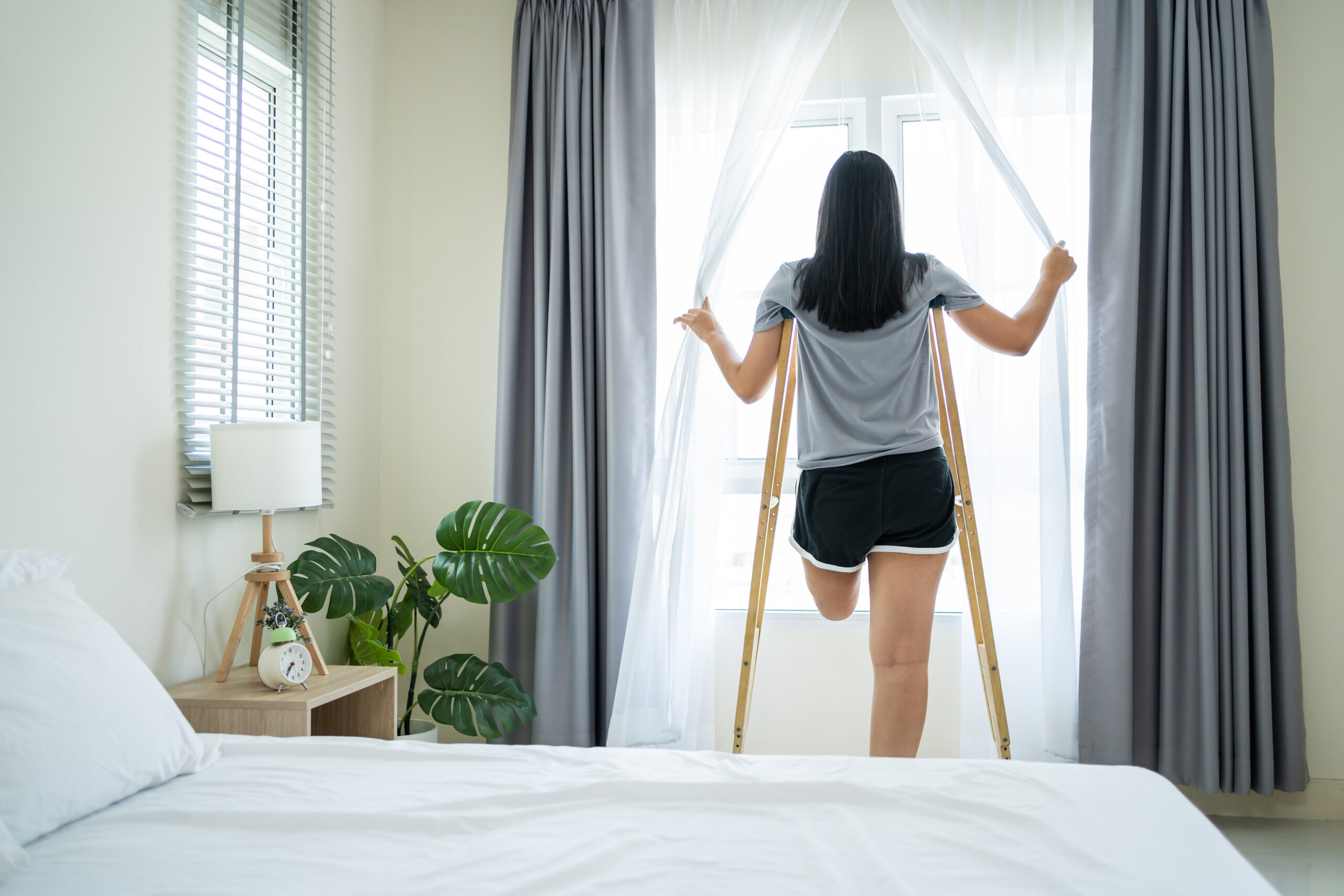Navigating life after limb loss comes with many questions—about recovery, mobility, prosthetics, pain management, and adjusting to daily life. Whether you’re newly facing this journey or supporting a loved one, you’re not alone.
Our FAQ section is here to provide clear, practical answers to common concerns, from managing phantom limb pain to exploring prosthetic options and adapting to everyday tasks. We believe that knowledge empowers confidence, and we’re here to help you find the information and support you need.
If you don’t see your question answered here, we encourage you to reach out, connect with our community, or speak with a healthcare professional. Everyone’s journey is unique, but together, we can find solutions and move forward with strength. Explore our FAQs below and take the next step in your journey with confidence.

Recovery is different for everyone, depending on factors like the cause of the amputation, overall health, and whether complications arise. Physically, the surgical site typically heals within 6 to 12 weeks, but full rehabilitation—gaining strength, learning new ways to move, and adapting to prosthetics or assistive devices—can take months to a year or more. Emotionally, it’s a lifelong journey. Some people adapt quickly, while others experience waves of grief, frustration, or even depression along the way. Support from healthcare professionals, family, and peer groups can make a big difference in the healing process.
Mobility depends on many factors, including the level of limb loss, overall fitness, and the availability of prosthetics or assistive devices. Many amputees regain the ability to walk with a prosthesis, though the process involves months of physiotherapy, strength training, and learning how to balance again. Others find that using wheelchairs or mobility aids better suits their lifestyle. Independence is not just about walking—learning how to navigate daily life in a way that
Recovery is not a straight line, and it’s completely normal to feel frustrated at times. Setting small, realistic goals and celebrating progress, no matter how small, can help keep you motivated. Surrounding yourself with supportive people—whether friends, family, or peers who have been through similar experiences—can provide encouragement. When emotions become overwhelming, speaking with a therapist or counselor who understands limb loss can be beneficial.
Mobility depends on many factors, including the level of limb loss, overall fitness, and the availability of prosthetics or assistive devices. Many amputees regain the ability to walk with a prosthesis, though the process involves months of physiotherapy, strength training, and learning how to balance again. Others find that using wheelchairs or mobility aids better suits their lifestyle. Independence is not just about walking—learning how to navigate daily life in a way that
Many people return to work after limb loss, sometimes with modifications or adaptive equipment. If your job is physically demanding, it may require learning new ways to perform tasks or switching to a different role. Workplace accommodations, such as adjustable desks, voice-to-text software, or specialized tools, can make a big difference. If returning to your previous job isn’t possible, vocational rehabilitation programs can help you explore new opportunities, update skills, and find meaningful employment. The key is to focus on what you can do, rather than what you’ve lost..
Limb loss is life-changing, and it’s completely normal to experience grief, frustration, anger, or sadness. Adjusting mentally takes time, and there’s no right or wrong way to process it. Seeking professional counseling, joining a support group, or talking to a mentor who has been through a similar experience can help. Many amputees find that setting small, achievable goals—like mastering a new daily task or increasing mobility—helps build confidence. Journaling, meditation, and finding new hobbies or activities can also be useful ways to work through emotions. Most importantly, allow yourself to feel what you need to feel, and know that you’re not alone in the journey.
Absolutely. Many amputees engage in sports like running, swimming, cycling, and even adaptive rock climbing. There are specialized prosthetics designed for different activities, as well as adaptive sports programs that offer inclusive opportunities. Whether you’re looking to stay active for fitness or compete at a high level, there are options available to help you stay engaged in the activities you love.
Limb loss can impact relationships in different ways, but strong communication and openness can help. Some friends and family members may not know how to respond, while others may surprise you with their unwavering support. If dating is a concern, remember that confidence and self-acceptance matter more than physical appearance. Many people find that true connections go beyond physical differences, and the right people will accept you as you are.
Public curiosity is common, and how you respond is entirely up to you. Some people prefer to educate others by sharing their story, while others keep it brief with a simple answer or humor. If staring makes you uncomfortable, redirecting your focus, wearing clothing that makes you feel confident, or using a prosthetic cover with a unique design can help shift attention in a way that feels more empowering.
Independence often comes down to adapting your environment and learning new techniques for daily tasks. Occupational therapists can help with strategies for dressing, cooking, driving, and household tasks. Assistive devices, home modifications, and voice-controlled technology can also make a big difference in maintaining independence. Finding what works best for you is a process, but over time, these adjustments become second nature.
Proper limb care is essential to prevent skin issues and infections. Daily hygiene is important—washing the limb with mild soap and warm water, then keeping it dry and moisturized (but avoiding excessive lotion use under a prosthetic liner). It’s important to inspect the limb daily for any sores, blisters, or signs of irritation, especially if using a prosthetic. Good prosthetic fit is key to preventing pressure sores, and adjustments may be needed as the limb changes over time. If pain, swelling, or skin problems occur, consulting with a prosthetist or doctor early can prevent complications.
How much you share is completely up to you. Some people prefer a simple, direct answer like, “I lost my leg due to an accident” or “I had an amputation because of a medical condition.” Others use humor or a lighthearted approach to put people at ease. Kids may be especially curious, and a friendly explanation—like comparing it to a superhero story—can help. If you’re not comfortable discussing it, a short response like, “It’s a long story, but I’m doing well” is fine too. Over time, you’ll find what feels natural for you..
Yes, it can. Many amputees notice that their residual limb gets cold more easily due to reduced circulation. In hot weather, sweating inside a prosthetic socket can be a challenge. Wearing breathable materials, using moisture-wicking liners, and keeping warm with appropriate clothing can help regulate body temperature. If circulation issues become a concern, a doctor can recommend ways to improve blood flow and prevent discomfort.
Driving is possible for many amputees, sometimes with vehicle modifications. Hand controls, left-foot accelerators, steering wheel knobs, and other adaptations can allow for safe driving. An occupational therapist or a certified driving rehabilitation specialist can evaluate whether modifications are needed and help with training. If you lost both upper limbs, voice-controlled and joystick-based systems can provide driving independence. In many regions, you may need a driving assessment and updated license before getting back on the road.
Phantom limb pain, where sensations seem to come from the missing limb, is common and can range from mild tingling to severe discomfort. This happens because the brain still “remembers” the limb and struggles to process its absence. Management techniques include medications like nerve pain relievers, mirror therapy (which tricks the brain into thinking the limb is still there), massage, heat therapy, acupuncture, and transcutaneous electrical nerve stimulation (TENS). Keeping the residual limb in a comfortable position, staying active, and working with a pain specialist can help find the best approach for relief.
Prosthetics come in many types, and the right one depends on personal needs, budget, and lifestyle. Basic prosthetics are designed for appearance and balance but don’t have functional movement. Body-powered prosthetics use cables and harnesses to allow movement, while myoelectric prosthetics use sensors that pick up muscle signals to control the limb electronically. There are also specialized prosthetics for running, swimming, or specific tasks. The fitting process can take weeks or months, and it may take time to adjust to using a prosthesis effectively. Some amputees choose not to use one at all, and that’s okay too—mobility and independence can be achieved in many different ways..
A prosthetic won’t feel exactly like a natural limb, but with time, it can start to feel like a part of you. At first, it may feel foreign or even uncomfortable, but as your brain adapts, you’ll develop new muscle memory and control. A well-fitted prosthetic can enhance mobility and function, but adjusting to it requires patience, practice, and often, adjustments by a prosthetist.
Yes, but the type of prosthetic foot you have will determine how flexible your footwear options are. Some prosthetic feet have adjustable ankles to accommodate different heel heights, while others are designed for a specific type of shoe. Many people find that sneakers and flat, supportive shoes work best for everyday comfort, but there are also specialized solutions for dress shoes and other styles.
Discomfort is not something you should just “tough out.” If your prosthetic is causing pain, blisters, or pressure sores, it’s important to see your prosthetist for adjustments. Your limb may change in shape over time, which means periodic refittings or new socket designs may be necessary. Using proper liners, socks, and padding can also help improve comfort.
Prosthetics and ongoing medical care can be expensive, but there are financial assistance programs available. Many insurance plans cover prosthetics, though coverage levels vary. Government assistance programs, nonprofit organizations, and grants can also help offset costs. Speaking with a prosthetist, social worker, or advocacy organization can provide guidance on financial resources and funding options specific to your situation.
Connect, Share, and Thrive
At Limbloss Connection, we understand the importance of community, connection, and support on the journey through limb loss. Our bi-weekly Virtual Support Group provides an open, welcoming, and safe space specifically created for amputees.
